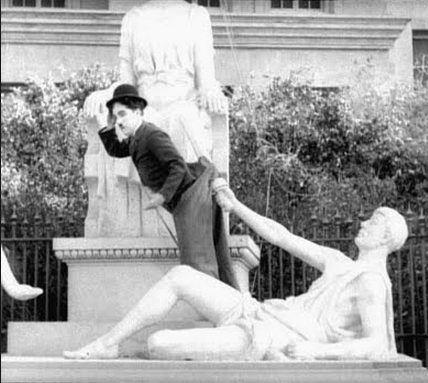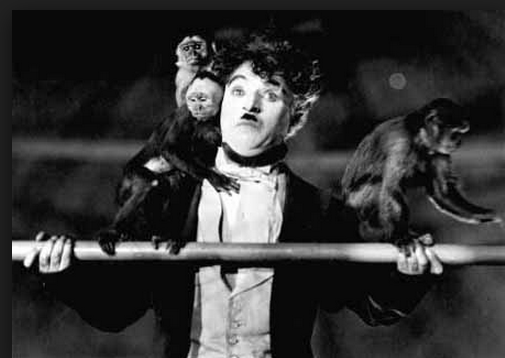Shifting the debate: new understandings of accountability
Accountability is a nebulous concept subject to multiple interpretations and understandings: it means different things to different people. According to traditional conceptions, an accountability relationship exists when a principal delegates authority to an agent to act in their interests. Central to this view is that only those with formal authority over an agent – those that have delegated authority to it – have the right to claim accountability. This approach is often used to conceptualise the accountability relationship between politicians and the electorate, or company directors and shareholders. Within this traditional view, holding an agent to account requires clearly defined roles and responsibilities, regular reporting and monitoring of behaviour against these roles, and the ability for principals to impose sanctions for breaches of responsibilities. Accountability is largely seen as an end stage activity where judgement is passed on results and actions already taken.
This understanding is too narrow; accountability needs to be more encompassing if it is to ensure organisations are truly answerable to those they affect. Given that the impacts of an organisation’s actions are often diffuse, responsibility should be so too. Accountability should not be determined by delegation of authority alone. Although an individual may not have delegated authority to an organisation to act in their interest, the activities of the latter may impact substantially on them, enough to warrant the establishment of an accountability relationship. This view of accountability emphasises that organisations have to respond to the needs of many stakeholders. This view also emphasises that accountability is more than an end-stage activity. To ensure that an organisation is responsible for its actions, relevant stakeholders need to be involved at every stage of the decision-making process. Passing judgement after a decision is made limits the extent to which an organisation can be accountable. Accountability needs to be an ongoing, changing process.
Understanding accountability in this way extends the limits of the concept beyond its role as a disciplinary mechanism and towards its use as a transformative process. An organisation that is accountable to multiple stakeholders not only ensures that decisions are effective in meeting the needs of those it affects, but also that decision-making processes are more equitable. This more open and participatory approach unlocks the potential of accountability as an agent for organisational learning. Accountability that is pursued on an ongoing basis opens up space for those affected by an organisation’s policies to input into the decision-making process. This in turn creates feedback loops that enable organisations to learn from what is effective and what is not. When understood on these terms, accountability is no longer simply a mechanism for disciplining power, but also a force for organisational change and for strengthening organisational performance. Clearly, accountability’s effects are not only beneficial to stakeholders, but also to organisations themselves.
Given that the impacts of an organisation’s actions are often diffuse, responsibility should be so too. This view of accountability emphasises that organisations have to respond to the needs of many stakeholders.
Passing judgement
after a decision is made limits the extent to which an organisation can be accountable. Accountability needs to be an ongoing, changing process.
Today’s global governance arena is not defined by unaccountable organisations, but by organisations that are either accountable to the wrong set of stake- holders or focus their accountability on one set of stakeholders at the expense of others.
2.1 The GAP definition of accountability
Based on this understanding, in the context of the GAP Framework accountability refers to
the processes through which an organisation makes a commitment to respond to and balance the needs of stakeholders in its decision-making processes and activities, and delivers against this commitment.
A key part to this definition is the notion of balance. Today’s global governance arena is not defined by unaccountable organisations, but by organisations that are either accountable to the wrong set of stakeholders or focus their accountability on one set of stakeholders at the expense of others. The key challenge is in creating a more balanced accountability, in which the voices of those most affected by an organisation’s activities are not overshadowed by the interests of the most powerful stakeholders. Accountability thus becomes a process that manages power imbalances between the organisation and its stakeholders as well as between an organisation’s various stakeholder groups.
2.2 Who are the stakeholders?
The key challenge is in creating a more balanced accountability, in which the voices of those most affected by an organisation’s activities are not overshadowed by the interests of the most powerful stakeholders. The concept of stakeholder is central to the understanding of accountability and underpins the entire GAP Framework. Stakeholders are
individuals and groups that can affect or are affected by an organisation’s policies and/or actions.26
Although this definition is similar to the traditional understanding of stakeholder (groups or individuals who have a ‘stake’ in the organisation), it contains an important nuance. It recognises that the actors who influence an organisation are often different from those who are affected by it.
Within the context of the GAP, distinctions are made between two different types of stakeholders: internal stakeholders – individuals or groups that are formally a part of the organisation, and external stakeholders – individuals or groups who are affected by an organisation’s decisions and activities but who are not formally part of the organisation. Of the internal and external stakeholders, the organisation needs to identify key stakeholders – those who significantly influence or are significantly influenced by an organisation and/or are integral to an organisation’s or project’s success or failure.
26 Note that not all individuals and groups who may have knowledge of, interest in, or views about an organisation are included in this definition of
Internal stakeholders
Members
Employees
Board of Directors
Shareholders
National members/chapters
External stakeholders
Recipients of loans, aid or grants
Contractors
Partners
Other affected groups or individuals
Peer IGOs
Suppliers Customers Contractors Financiers Partners Trade unions
Government
Peer TNCs
Funders Supporters Beneficiaries
Partners Government Peer INGOs
In seeking to balance accountability to different stakeholder groups, an organisation must recognise that stakeholders have an interest in its success or failure and each will have the ability to help or hinder its activities. In exercising their agency, each stakeholder has:
- Different capacity: resources (particularly financial), knowledge and expertise
- Different degrees of access to reliable information
- Different needs and expectations.
These differences will manifest themselves in different levels of power and influence and give rise to the unbalanced accountabilities discussed above. They are often compounded by the fact that organisations will have vested interests in certain sets of stakeholders as well.
2.3 Accountable to whom and for what?
Organisations need to prioritise both the issues on which they engage stakeholders and the stakeholder groups that they engage. It is unrealistic to expect an organisation to be accountable to all its stakeholder groups for all issues: this would lead to accountability paralysis.
An organisation must first determine on which issues it must engage. To determine this, it needs to work from a combined understanding of who its stakeholders are, the impacts the organisation has on its stakeholders, and the impact stakeholders have on the organisation. Developing this understanding is an iterative process as the understanding of one will inform the other: looking at stakeholders will increase understanding of impacts, and looking at activities and impacts will increase understanding of stakeholders.
Organisations need to prioritise both the issues on which they engage stakeholders and the stakeholder groups that they engage.
For each engagement organisations need to prioritise their stakeholders and be clear about the ways in which they are accountable to them. The starting point of this is a stakeholder analysis, of which the purpose is to:
- Identify key stakeholders and define their interests and characteristics
- Assess the manner in which stakeholders might affect or be affected
- Understand the relations between stakeholders, including the real or potential conflicts of interest and expectation between them
- Assess the capacity of different stakeholders to participate.
The prioritisation of stakeholders should take into account influence, responsibility and
representation:
Influence
Influence is about more than how much power stakeholders have to bring about change within an organisation (those that ‘can affect’). It is also about the needs and interests of stakeholders who ‘are affected by an organisation’s policies and/or actions’ but do not have the power to influence the organisation. Ensuring that these stakeholders have influence in the process is integral to the overall accountability of an activity/organisation and ultimately its success. Failure to view influence in this way will have adverse effects by reinforcing already skewed accountability systems towards those stakeholders with power, at the expense of those less powerful but affected by an organisation.
Responsibility
An organisation has different levels and types of responsibility to different stakeholders.
- regulatory responsibility to the state to comply with certain regulations
- contractual or legal responsibility to other organisations or partners
The relationship between an organisation and its stakeholders is not static, but ongoing and continuously changing... [therefore] for what and to whom an organisation is accountable also evolves
financial responsibility to donors or shareholders, to ensure their money is used in the agreed way
to stakeholders, either because they are directly or indirectly dependent on the organisation and affected by it; or because they are integral to the organisation’s mission, vision and values.
ethical or moral responsibility to stakeholders, either because they are directly or indirectly dependent on the organisation and affected by it; or because they are integral to the organisation’s mission, vision and values.
Representation
This encompasses the legitimacy of a representative (i.e. the extent to which a stakeholder truly represents its constituents needs and interests), and the number of constituents that it represents.
Through engaging in this process an organisation can understand what its impacts are, who it affects and how, and use this understanding to inform the best use of resources in achieving accountability. Critically, the relationship between an organisation and its stakeholders is not static, but ongoing and continuously changing. For instance, although some stakeholders are easy to identify and remain as such for long periods of time, other groups shift depending on the work being undertaken and the stage of a project. Consequently for what and to whom an organisation is accountable also evolves.
The GAP Framework
The GAP framework unpacks accountability into four dimensions: transparency, participation, evaluation, and complaint and response mechanisms. To be accountable, an organisation needs to integrate all these dimensions into its policies, procedures and practice, at all levels and stages of decision-making and implementation, in relation to both internal and external stakeholders. The higher the quality and embeddedness of these in an organisation’s policies, processes and procedures, the more accountable the organisation will be.
Transparency
Transparency refers to an organisation’s openness about its activities, providing information on what it is doing, where and how this takes place, and how it is performing. This constitutes basic information necessary for stakeholders to monitor an organisation’s activities. It enables stakeholders to identify if an organisation is operating inside the law, whether it is conforming to relevant standards, and how its performance relates to targets. In turn, this enables stakeholders to make informed decisions and choices about the organisation.
Transparency also strengthens an organisation’s accountability indirectly. A transparent organisation provides stakeholders with the information they need to participate in the decisions that affect them. Without access to all the relevant information regarding an activity or decision
it would be difficult for stakeholders to participate meaningfully in its development.
Participation
To be accountable, an organisation needs to understand the needs and interests of its stakeholders. This is best achieved if the organisation engages with its stakeholders and develops a participatory approach to decision-making. It needs to establish mechanisms that enable stakeholders to input into decisions that affect them. This may require engagement at the operational level, the policy level and/or the strategic level. An organisation committed to accountability must enable stakeholders’ input into the broader organisational policies and strategies and not confine engagement to operational issues.
To strengthen accountability, participation must lead to change; it has to be more than acquiring approval for, or acceptance of, a decision or activity, or of including stakeholders in the implementation and evaluation of that decision. Stakeholders must have a say in how the decision is taken and what decision is made. In this regard, participation for accountability is intimately bound with issues of power. There is no escaping the fact that a degree of power needs to be ceded to stakeholders in order for an organisation to be accountable.
Evaluation
Evaluation is another essential component for achieving accountability. It ensures that an organisation is accountable for its performance, that it is achieving its goals and objectives, and meeting agreed standards. Evaluation allows organisations to indicate to stakeholders what
they have achieved and what impact they have had, but also allows stakeholders to hold organisations to account for what they said they would do.
The relationship between evaluation and accountability centres on learning. The evaluation process and the results that emerge from it can inform ongoing activities and future decision- making, providing the information that will allow an organisation to improve its performance, thus making it more accountable to its mission, goals and objectives.
The GAP framework unpacks accountability into four dimensions: transparency, participation, evaluation, and complaint and response mechanisms.
The higher the quality and embeddedness of these in an organisation’s policies, processes and procedures, the more accountable the organisation will be.
To be accountable, an organisation needs to integrate all these dimensions into its policies, procedures and practice, at all levels and stages of decision- making and implementa- tion in relation to both internal and external stakeholders.
Complaint and response mechanisms
Enabling stakeholders to seek and receive response for grievances and alleged harm is a critical aspect of accountability. This is the mechanism through which stakeholders can hold an organisation to account by querying a decision, action or policy and receiving an adequate response to their grievance. Transparency, participation and evaluation processes should be used to minimise the need for complaint mechanisms. Complaints and response mechanisms should be seen as a means of last resort for stakeholders to hold the organisation to account and for organisations to become aware of an issue that requires a response.
Each of these dimensions are necessary for accountability, while alone none are sufficient. Meaningful accountability only results when all four are effective.
Each of these dimensions are necessary for accountability, while alone none are sufficient. Meaningful accountability only results when all four are effective. For example, an organisation may be very transparent about its activities but, unless it creates the channels through which stakeholders can use the information it provides to actually input to and influence decisions, it is not fully accountable. Similarly, if an organisation provides mechanisms for stakeholders to file complaints, but then does not have evaluation processes in place that feed lessons from these mistakes into future decision-making to ensure learning, it is not fully accountable.
3.1 Proactive and reactive elements of accountability
A combination of mechanisms make an organisation accountable: some will proactively improve accountability, others will react to calls for accountability. An organisation’s commitment to accountability can be weighted depending on whether it focuses more on being proactive or reactive; for instance, if it expends considerable resources addressing problems that have occurred and dealing with adverse publicity, it is being reactive. If, on the other hand, it involves stakeholders in projects prior to and throughout their implementation, it is being proactive.
An organisation must take a proactive approach to accountability, but also have reactive mechanisms in place. The GAP Framework incorporates both proactive and reactive approaches to accountability.
Transparency and participation interlink to create a proactive approach to accountability. They shift the emphasis from accountability as an end-stage activity to an ongoing process. Organisations that embrace this approach are constantly providing stakeholders with information and engaging with them in decision-making and policy formulation before they take place. This creates a relationship between the organisation and its stakeholders that is more dynamic, receptive and responsive.
The role of evaluation in relation to the framework is more fluid. It is a mechanism for both understanding successes and failures, and for feeding lessons into future decision-making. This understanding of evaluation supports a proactive approach to accountability. It also plays a reactive role in reporting on performance.
Complaint and response mechanisms and, in some situations, evaluation reflect a reactive approach to accountability; they support an understanding of accountability in which outputs and/or decisions are assessed after they occur. A reactive organisation will only change its policies
Although important, reactive accountability is about responding to judgement after a decision is made or policy is implemented. It limits the extent to which an organisation can be responsive to stakeholders.
Although the proactive and reactive approaches are complementary, organisations need to emphasise the former to ensure a form of accountability conducive to learning. Any organisation that chooses to take a purely reactive approach will undoubtedly experience unnecessarily high costs as projects and policies progress to advanced stages before stakeholders’ concerns are heard.
3.2 The accountability web
Although each dimension – transparency, participation, evaluation, and complaint and response mechanisms – is independently important to increasing accountability, its contribution is significantly strengthened through its interaction with the others. The dimensions underpin each other in a web of mutually reinforcing linkages.
Increased accountability
Transparency
The provision of accessible and timely information to stakeholders and the opening up of organisational procedures, structures and processes to their assessment
Complaint & response mechanisms
Mechanisms through which an organisation enables stakeholders to address complaints against its decisions and actions, and ensures that these complaints are properly reviewed and acted upon
Participation
The process through which an organisation enables key stake- holders to play an active role in the decision-making processes and activities which affect them
Evaluation
The process through which an organisation monitors and reviews its progress and results against goals and objectives; feeds learning from this back into the organisation on an ongoing basis; and reports on the results of the process
Although each dimension exists independently of the others, the four overlap and intersect in multiple ways. Where there is overlap, there is strengthened accountability. For example, an evaluation process underpinned by openness and transparency is more likely to increase organisational accountability than one that is conducted in secrecy. Similarly, an evaluation that engages key stakeholders in the process of assessing performance and is open about its findings will contribute more to accountability than one that does not. The more overlap there is between the dimensions, the more accountable the organisation becomes.
For each of the four dimensions a policy needs to be in place that sets the objectives for the delivery of that dimension. How, and at what levels these are set, have a considerable impact on accountability. To ensure the objectives reflect a diversity of interests and needs, and thus are reflective of an organisation’s multiple stakeholders, they need to be developed with the participation of these stakeholders.
Likewise, to ensure meaningful accountability, an organisation’s policies and processes need to be transparent in their operation and execution. The entire evaluation process, for example, from planning, to monitoring, to communicating results, to feeding them back into decision-making; all this needs to be undertaken in an open manner to enhance the ability of stakeholders to view and input into the process. The same goes for the complaint and response mechanism. All of its elements need to be transparent. Likewise for participation: whenever a stakeholder analysis is undertaken, the results must be made available, reasons for non-engagement must be explained and outcomes of the engagement process must be reported back to stakeholders.
Elements of evaluation also need to be integrated into each dimension. The relationship between an organisation and its stakeholders is dynamic in nature. As an organisation branches out into new activities or undertakes new projects, its stakeholders will change. It is therefore crucial that accountability mechanisms evolve and adapt in parallel through evaluation and learning. For example, in identifying a new set of stakeholders, an organisation might have to change the way it discloses information, or may have to rethink its complaint and response mechanism. This continual adaptation is the key for accountability mechanisms to remain relevant to the stakeholders that use them and to the organisation that will learn from them.
An element of the complaint and response mechanism needs to be reflected in each of the other dimensions as well. Processes need to be in place that allows stakeholders to raise concerns. For example, stakeholders should be able to file a complaint if they feel they have been unfairly excluded from an engagement process or, having participated, they feel that their concerns have not affected the decision. Moreover, as part of any transparency policy, there should be a procedure in place that allows stakeholders that have been denied access to information to make an appeal.
3.3 Key conditions for accountability
What have been outlined so far are the key dimensions to organisational accountability: what an organisation needs to do to become more accountable to its stakeholders. However, for these mechanisms to be effective and for organisations and stakeholders alike to reap the full benefits of accountability, an essential condition needs to exist: organisational commitment to accountability. An organisation must want to be accountable. Although this may seem self-committed to accountability will determine the quality of the accountability mechanisms it puts in place and of the reforms it undertakes to increase its accountability.
Commitment needs to be entrenched at the highest level of an organisation, both at the Board and senior management level. Without the will of those in positions of power, there is little chance that accountability reforms will take hold; and even if they do, without high level commitment, they will only ever be piecemeal, implemented in relation to individual projects, but never integrated into organisational structures and processes. Crucially therefore, senior managers and the Board must be committed to accountability.
To be effective, accountability must also be entrenched in everything an organisation does, from its finances, to its operations, to its human resources. Commitment therefore also needs to cut across departments. If an INGO makes the decision to strengthen its accountability to beneficiaries, for example, this might require the fundraising teams changing how they report to donors, finance departments learning how to communicate financial information to people that are illiterate, and campaign teams developing mechanisms that give the poor and marginalised a direct voice in international advocacy.
For accountability to be realised, there are two concrete ways in which commitment needs to manifest itself: in the form of embeddedness and responsiveness. Firstly, accountability mechanisms need to be embedded in all an organisation’s processes and procedures, at all levels of decision-making. For accountability to be effective it cannot be just an appendage to an organisation’s core operations; it needs to be integrated into everything it does. On a practical level, this will require that the policies for each of the dimensions be disseminated at all levels of management; that there is a clear understanding within the organisation as to the benefits and importance of accountability; and that appropriate incentives and sanctions exist to ensure staff compliance with new practices and procedures. Crucially, this will also require the necessary resources being made available. Accountability is not a costless activity. It requires both money and training for reforms to be effectively implemented and sustained. Systems need to be built, for example, that enable organisations to engage with and respond to stakeholders, while staff need to be trained in how to facilitate this process. Without the necessary resources, accountability mechanisms will not be effective.
Secondly, an organisation’s commitment to accountability must be reflected in its responsiveness to stakeholders’ concerns and needs, and its willingness to adjust policies when necessary. This requires an organisation to address the power imbalance between itself and stakeholders. This should not be mistaken as a call for allowing stakeholders total power in decision-making, but as one for the need of increased respect and recognition that stakeholders also have capacity and expertise that is valuable to the organisation. There needs to be a commitment from organisations to listen to their stakeholders when making decisions, to change policies and activities when appropriate and when not, to explain why.
Commitment and success are mutually reinforcing; they interact to produce virtuous or vicious cycles. Once an organisation is committed to the accountability agenda, for example, it is more likely that the necessary resources will be made available, that accountability reforms will be widespread, that the organisation will be responsive to stakeholders’ needs and that this will lead to improved performance. Similarly, if there is a lack of commitment, the necessary resources will be lacking, reforms will be piecemeal, receptivity to stakeholders will be low and the impact on performance will be more limited.
For accountability to be realised, there are two concrete ways in which commitment needs to manifest itself: in the form of embeddedness and responsiveness.
For accountability to be effective it cannot be just an appendage to an organisation’s
core operations; it needs to be integrated into everything it does.
An organisation’s commitment to accountability must be reflected in its responsiveness to stakeholders’ concerns and needs, and its willingness to adjust policies when necessary.
Ultimately, for accountability to be realised it needs to become integrated into the culture and core practices of an organisation. It needs to become ingrained in the organisational values and norms. If an organisation has commitment at the highest levels and if this is manifested in the ways described above, there is a high likelihood that accountability will develop.
The Accountable Organisation
An accountable organisation takes proactive and reactive steps to address the needs of its key stakeholders while delivering against its mission.
- It is transparent in both its activities and decision-making processes, engaging in ongoing dialogue with key stakeholders over the information they need to make informed decisions
- It engages its key stakeholders in its decision-making processes related to policies and practice
- It evaluates performance, policies and practice in consultation with its key stakeholders. It learns from and reports on the outputs of these evaluations
If an organisation manages to do this it will increase its accountability to key stakeholders. Yet, should it fail to deliver on any of these points,
- It has channels through which stakeholders can voice their grievances and receive an appropriate response.










